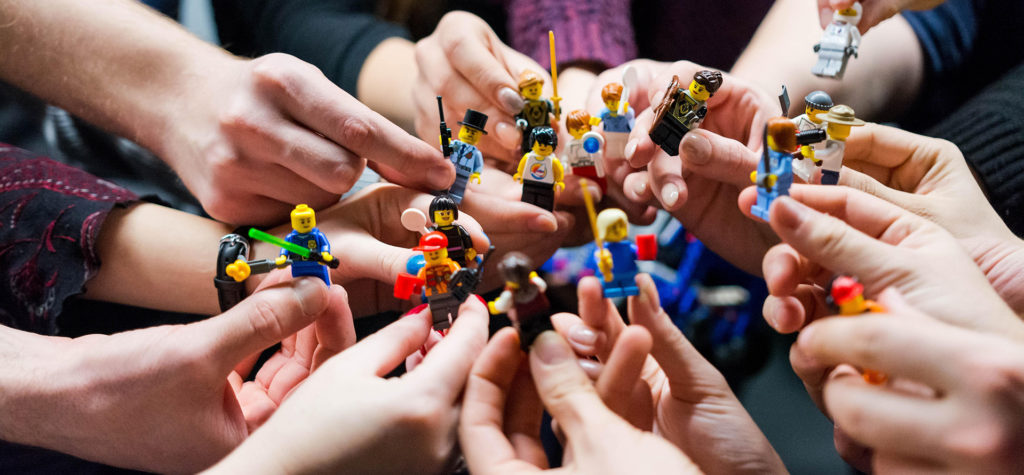Working in teams can be one of the most fulfilling experiences one can have in your professional life and yet it can also be one of the most common reasons to look for other employment. In some teams, you are just a number, another asset to be exploited or a skill to be applied where your opinion does not hold any value. In other teams, you could feel extremely valued and empowered, and this is closely related to where the team lies on the spectrum of empowered teams. How a team functions can either be the utopia or dystopia of product teams.
From my experience here are a few main themes I have focussed on as a product manager to take a step closer to an empowered team.
Trust
To me, trust is the foundation on which a successful product team can be built, but building trust is one of the hardest things any product manager will encounter during their career. Naturally, humans are wired to form a connection of trust when the risk they have taken is met by the delivery of the desired outcome. The key here is to build trust in small increments from both sides, where the problem comes from the business and the solution from the team. Allowing them to meet in the middle is a sure way to let the client build trust in the team and the team trust that the solution will solve the problems for the client. A large portion of risks experienced in teams is mitigated in this manner.
People
Most successful product teams out there are not classified as such only because they are exceptional hires but because they manage a fine balance between competence, character, and the “nar”. Let us rationalize this for a moment, you need to be competent in doing your job. You do not need to be a domain expert, but you need enough domain expertise to be able to make a meaningful contribution to the team. When hiring people, quite some emphasis is put on character – making sure that they are the correct cultural fit and trying to find someone who thinks like us assuming that would lead to them fitting in. I am not saying this is wrong, but fitting in should always balance out with competence.
To me, the key thing is the “nar” or as the New Zealand rugby team calls it, the “no assholes rule”. Being one of the most successful sports teams in the world they realized early on that one person can be toxic to the team if that person is an asshole, even if they are exceptionally skilled they could still break the team.
Leadership & Management
Strong leadership should inspire and motivate the organization and to do that leaders should focus on the following key topics pointed out by Marty Cagan from the Silicon Valley Product Group.
- Product vision – The product vision should be the shared objective for the organization, the “north star” if you like, to guide the team or multiple teams to the same overarching result.
- Product strategy – The product strategy is the plan that helps accomplish the product vision.
- Product principles – The product principles should reflect the values of the organization.
- Product priorities – The OKR’s is the mechanism by which the leaders can define the product priorities.
- Product evangelism – The leaders should communicate all of the above and make teams of missionaries instead of teams of mercenaries.
Managers on the other hand play a vital role in the development of these teams to move them closer to an empowered team. This would include things like professional development plans, coaching, and ensuring the team is happy. Managers are the first line of communication and they should understand and be able to communicate the product vision and strategy.
Ownership
One of the key things I realized early in my Product management career was that people are more empowered when they have a sense of ownership over what they do. The product they develop is not just another product, but it is a product they have an interest in and of which they can feel proud. Having the product team as part of the product discovery process gives them a sense of ownership that would have been lost if work was designated to them without involving them in the exploration of that solution.
Fun
If you are having fun you will most certainly enjoy what you are doing and continue doing so, that is why “Fun” has made my top 5 list. Doing fun activities together as a team acts like glue keeping the team together. It takes your mind off the problems at hand and allows team members to interact with each other in a very different way. By doing fun activities together you get to know each other on a more personal level, which aids in building trust within the team.
The saying, “Work hard, play hard”, has to manifest itself from within the team and it should be an organic growth towards a balance between solving difficult problems and having fun together.
Summary
There are many ways to take a step closer to empowered teams. From my experience, these were some of the ones best suited for my teams and should by no means be seen as the best or only way to accomplish it.
It is important to remember that each team, environment, organization, and product is different and therefore should find its own path to being an empowered team. The team should always be part of the process and work should never be forced on them. It should rather be seen as a collaborative effort that in itself aids in building trust, taking ownership, and having fun doing so.





